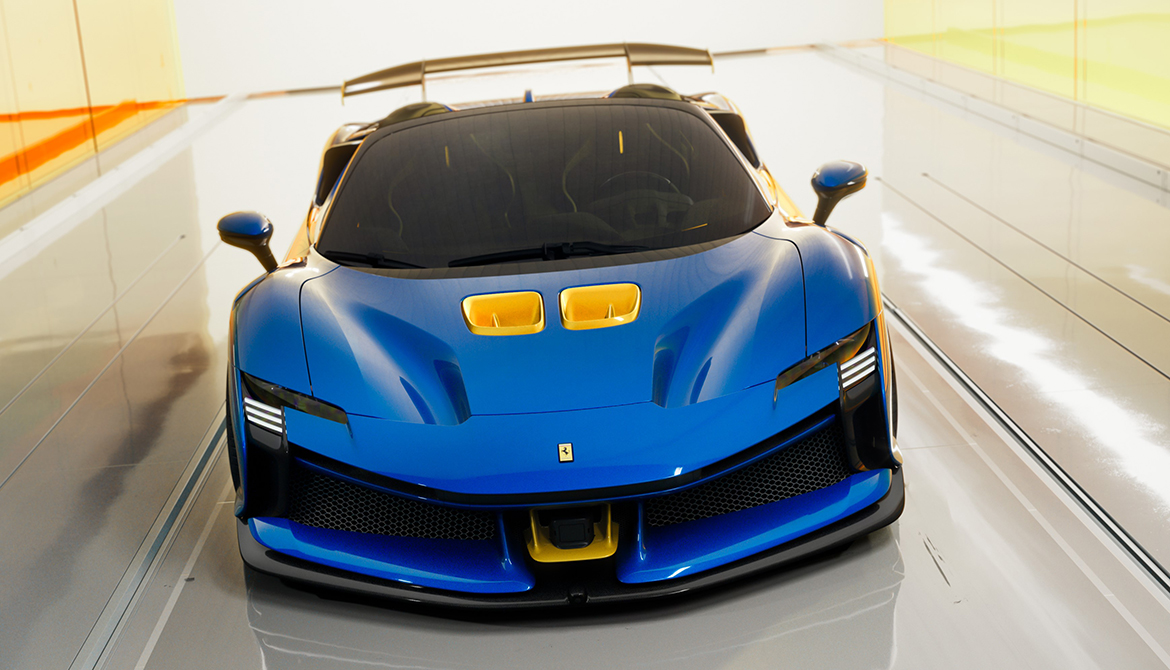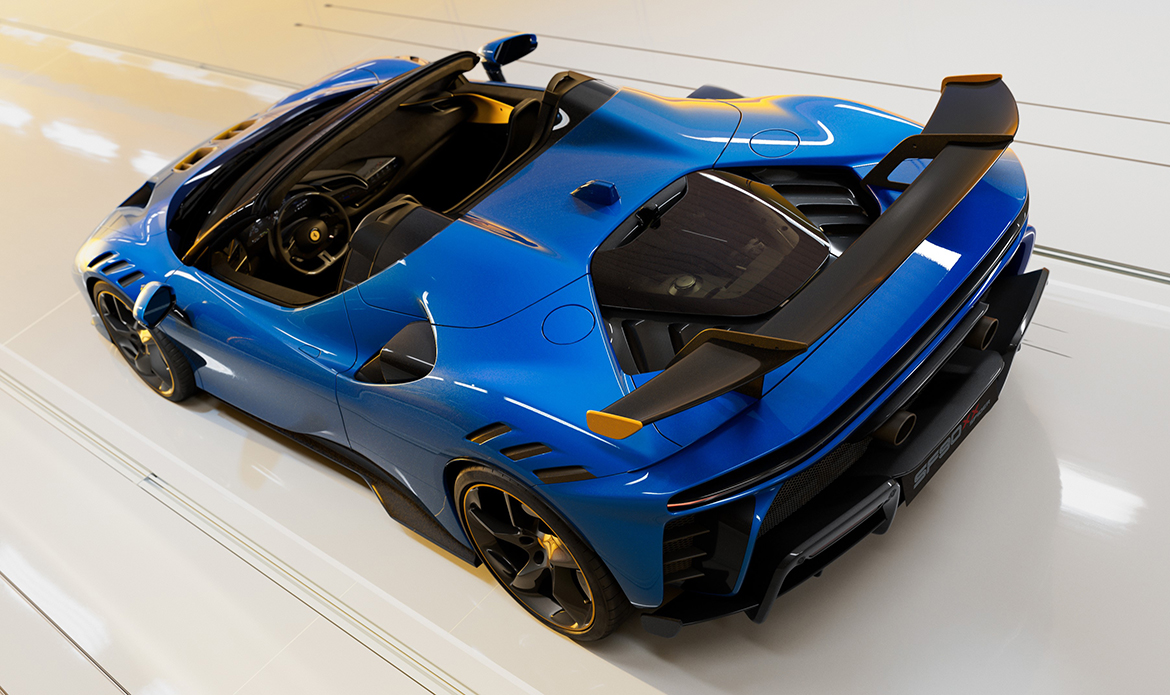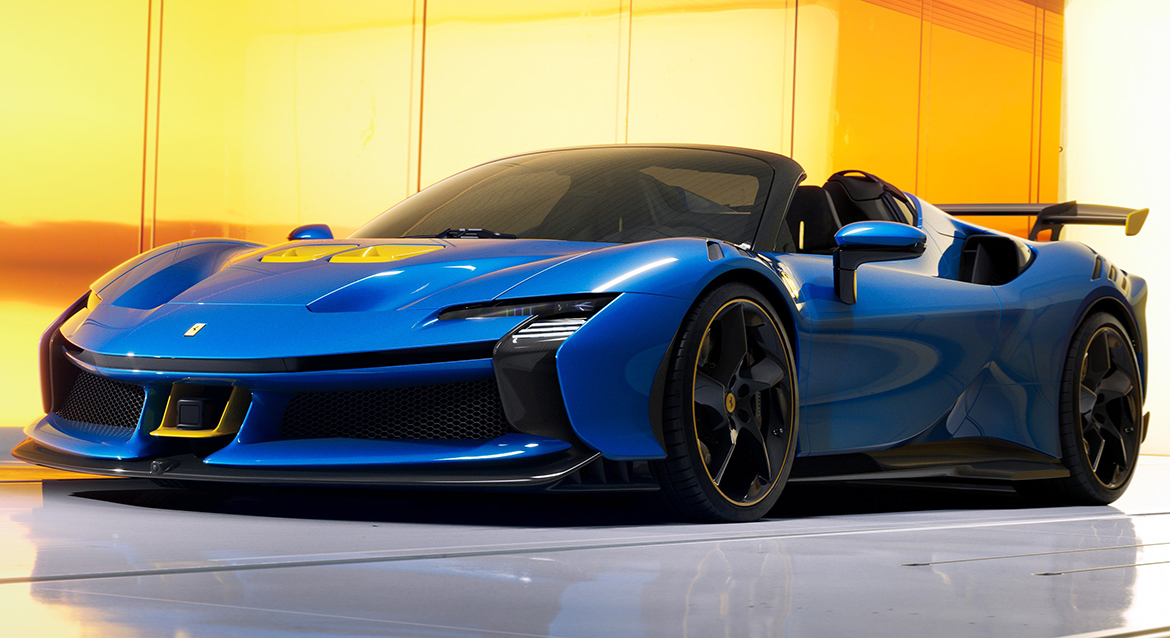It stands out sharply against the tail, as if to sanction the triumph of pure technique over the sensual aesthetics of Italian tradition. On closer inspection, however, the fixed spoiler of the Ferrari SF90 XX Stradale appears instead to seal a new balance between two domains of excellence of Maranello. Flavio Manzoni, head of design since 2010, points this out immediately: “The most important challenge surrounding this variant of the SF90, which is part of the special production range, was to blend the visual content of the XX range, oriented towards absolute efficiency and track use, with the refinement of form that is essential on a Stradale (roadworthy) product”. An interesting dialectic of design pinnacles, especially if one considers how the two-seater already qualifies for explosive performance and relative constraints. A pivotal role is hence played by the rear appendage, in this complex relationship, never before attempted at the Prancing Horse.
“For decades, Ferrari has used only concealed elements, so much so that the last reference to be devoid of them was even the celebrated F50 of 1995, on which the structure of the rear made a fundamental contribution to its highly featured impact. Even further back, one could mention the 1989 F40”, observes the designer. “Returning to this solution allowed us to give the body of a modern car a never-seen-before power, a more radical optical presence. Moreover, although my collaborators and I have always pursued the utmost purity, such an ‘addition’ is legitimate on a proposal that is also intended for racing”.
On the other hand, underneath the towering spoiler is a further interesting component: a mobile deflector that throttles and directs air flows, also to avoid inconveniences to the repositioned radiators, confirming the refined research underlying the apparent simplicity of an external carbon fibre blade. In order to balance the colossal aerodynamic load that pushes on the rear end thanks to the research (up to 530 kg at 250 km/h), the front volume is now pierced by two S-ducts that in turn generate a downforce (45 kg) and open upwards in contrasting coloured vents. “These are details that I have no hesitation in describing as techno-chic”, comments Manzoni. “They combine very high functionality with a clean and captivating stylistic result”. The innuendo, obvious if one knows the Sardinian architect, suggests that certain expressions of 1970s industrial design ideally inspired the details, such as the Brionvega televisions to which the bonnet outlets seem to be hinting.
The layout is as centred for the coupé as it is for the spider with its even more radical exterior. What about inside? “We asked ourselves how to reproduce the same philosophy. Apart from the colours and materials, we found a key in the lessening of weight of the console, door panels and seats. The latter, in particular, are the lightest ever adopted on a Ferrari and ‘appear’ monocoque thanks to the concealment of the hinges”. A final artifice to blend racing performance and balanced styling.














